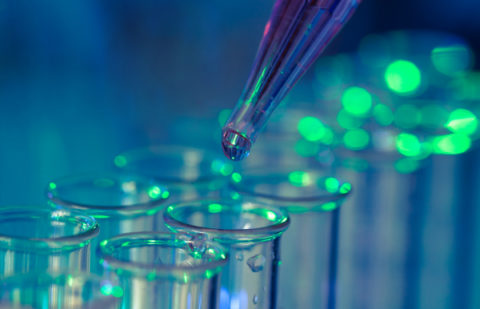Glass and the energy reform: Sustainable production thanks to electricity?
FAU and TU Nürnberg are conducting joint research into how to make glass production greener in future.
2022 is the international year of glass. And yet many glass factories are struggling to survive. High energy costs and considerable CO2 emissions mean that glass production faces a challenging future. Researchers at FAU and Technische Hochschule Nürnberg Georg Simon Ohm are currently conducting research aimed at finding a solution to make glass production more sustainable without relying on fossil fuels. Their approach is based on electrically operated furnaces.
“We use glass far more in our everyday lives than we realize, sometimes colored, sometimes transparent, for a whole range of different functions,” says Prof. Dr. Dominique de Ligny from the Chair of Glass and Ceramics at FAU. “Not only for windows, but also for our smartphone screens, for storage jars, in rotary blades in wind turbines or in the production of lasers.”
Producing glass requires large amounts of energy. In order to produce glass, various raw materials have to be heated in a furnace at temperatures of over 1600 degrees Celsius. This high temperature is achieved by burning natural gas, but large quantities of CO2 are released in the process. Rising prices for natural gas mean that glass factories are facing huge increases in manufacturing costs. In the meantime, energy costs account for more than 40 percent of total costs, whereas before 2020 they only accounted for 14 percent.
A trend that is already placing several glass factories at the brink of closure.
Melting glass using electricity
Together with Prof. Dr. Sven Wiltzsch from the Faculty of Materials Engineering at TH Nürnberg, Prof. Dr. Dominique de Ligny has already been researching into methods to make glass production more sustainable and independent of fossils fuels since 2020. One option is to heat furnaces with electricity instead of natural gas. In order to heat the raw material using electricity, electrodes are attached to the edge of the glass melting pot. Electricity flows between the electrodes, transferring energy to the material and causing it to start to melt.
“If we presume that we will be able to use green energy in future, that would make this method much more sustainable. This process would only release very small amounts of CO2, as purely electricity-based melting processes do not involve any combustion. Side products such as CO2 or carbon monoxide would no longer be released,” explains Prof. Wiltzsch. “If the furnace is operated using electricity, less energy is lost than is the case when converting hydrogen, for example. The system is therefore more efficient.”
Blue glass instead of brown glass
During their experiments, however, the researchers came across a problem: their method is not suitable for producing brown glass, but brown glass is vital for certain purposes. Brown glass is required, for example, to store medicine and foodstuffs, as it protects them from UV rays.
The reason why the method is not suitable for producing brown glass is the high concentration of oxygen in electric furnaces. In traditional furnaces, the atmosphere is low in oxygen, but in an electric oven, oxygen levels are high. The high concentration of oxygen in the furnace changes chemical reactions at the level of the atoms, producing blue rather than brown glass. Nicole Ostermeier is investigating the special atomic properties of brown glass in her Bachelor’s thesis. She is studying applied materials science at TH Nürnberg, and is carrying out research at FAU into why brown glass loses its color and how the melting process changes when electricity is used.
“If we understood the effect oxygen has on the color of the glass, we would also be able to produce brown glass using electrodes, making the entire glass production process more sustainable,” summarize Prof. de Ligny and Prof. Wiltzsch.
Further information
Prof. Dr. Dominique de Ligny
Chair of Glass and Ceramics (FAU Erlangen-Nürnberg)
Phone: +49 9131 85 27553
dominique.de.ligny@fau.de
Prof. Dr. Sven Wiltzsch
Faculty of Materials Engineering (TH Nürnberg)
Phone: +49 911 5880 1153
sven.wiltzsch@th-nuernberg.de
